Veterinary Triage and First Aid in Wildlife Casualties
1/28
Earn XP
Description and Tags
these are about to be the easiest 29 flashcards of your life, these should honestly take 10 minutes
Name | Mastery | Learn | Test | Matching | Spaced |
|---|
No study sessions yet.
29 Terms
What cases are you most likely to see with wildlife?
Injured or orphaned wildlife
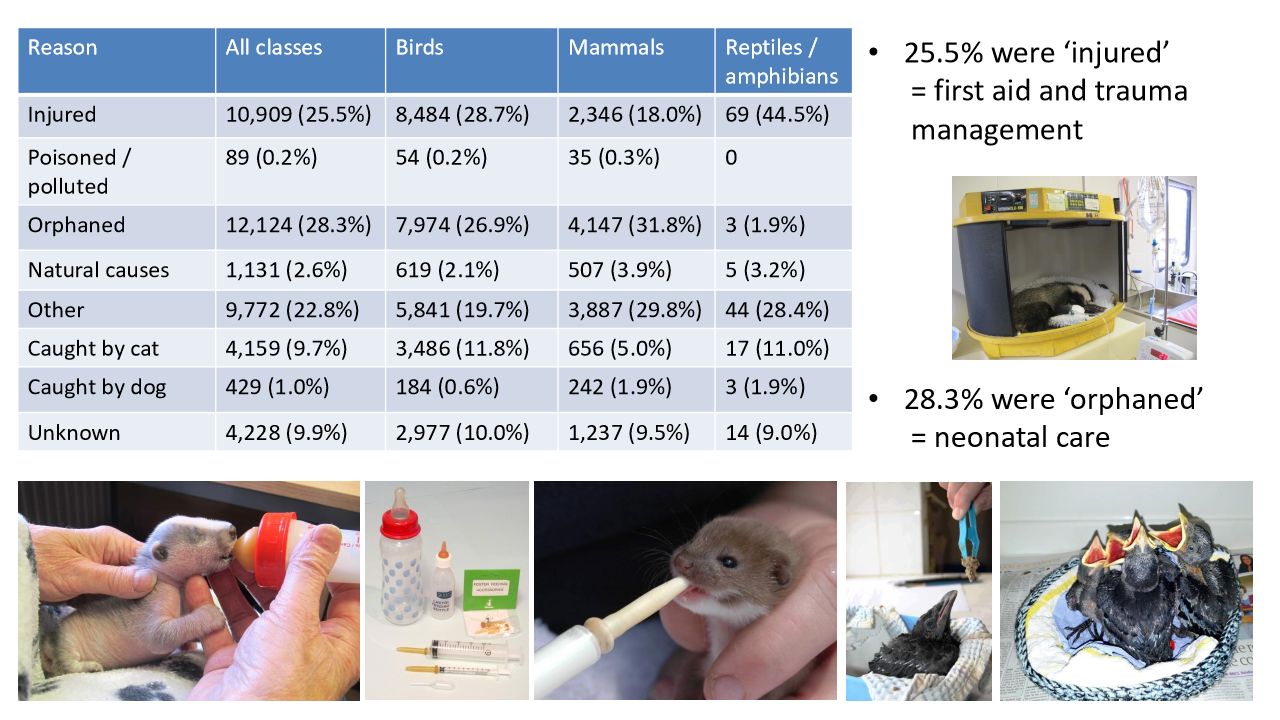
How would you define wildlife triage?
the initial assessment of a casualty to make a decision to treat or euthanize
what are some requirements for a succesful rehabilitation and release?
suitable casualty animal
no legal issues present
adequate veterinary care is possible
suitable rahab care facility
suitable release site
correct weather and time of year for release
what is a suitable casualty?
wildlife that can be returned to the wild and survive
move normally
defend itself/territory
feed itself
reproduce in a normal manner
what is important history information to gather from the “finder” (person who brings the animal in)?
is it alive
how is it moving
is it behaving normally
can it see
is there blood/ obvious injuries?
where is it?
Species?
adult? juvenile?
gender?
What comes after history?
a clinical exam! duh
weight (pre-weight)
check for ID (microchip btwn shoulder blades)
wing position assessment
BCS
welfare conditions
prognosis
estimated rehab time
euth decisions
Note: you dont usually get to do a follow up, so treat accordingly
what is a wing position assessment?
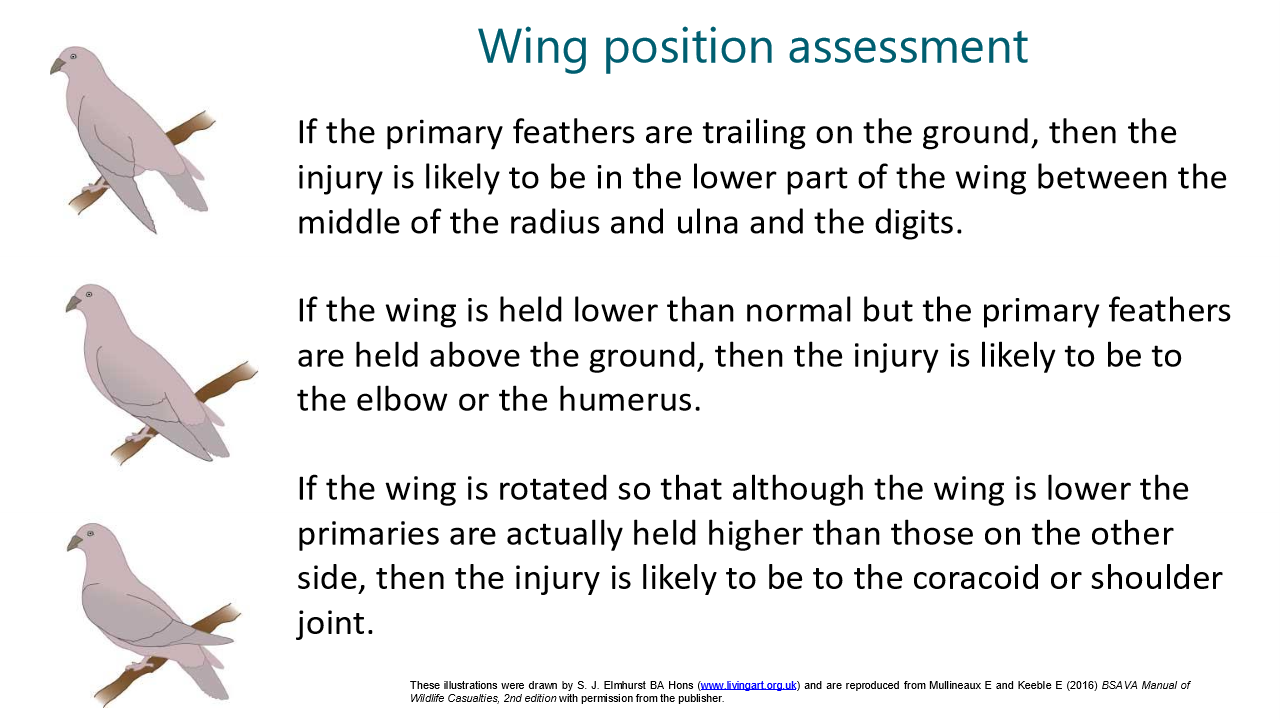
veterinary surgeons are obligated by RCVS to provide emergency care, what does this include?
emergency fluids and supportive care
any additional care like xrays, etc could be covered by a rehab center, but costs need to be discussed beforehand
what are some medical reasons for euthanasia?
These are dependent on age and species:
unconscious or comatose
behavioral abnormalities
damage to jaw or beak (feeding/grooming interference)
loss of hearing
permanent or long-term loss of vision
loss of an eye
loss of function (perm or not) of limb or wing
fracture of limb or wing involving a joint
perm feather damage or loss of waterproofing (birds)
pelvis fracture with narrowing of pelvic canal
loss of reproductive function
what are some non-medical reasons for euth?
Must be addressed first 24-48 hrs:
availability of space, staff time, knowledge, and experience in rehab facilities
availability of suitable release sites
time of year
legal and ethical considerations
if unsure, seek advice!
What classifies as a suitable release site for adults?
Adults should go back where they are found
disease control
genetic variation
territorial considerations
what about suitable release sites for juveniles?
they need a new site, that must be safe (roads, hunting, people, etc)
suitable food and habitat
population density
consider risk of disese
have landowner consent
why would you need to consider time of year for release?
for migratory animals and animals that hibernate
weather can impact release
natural breeding season
welfare associated with keeping
may not be legal to release some species
what is classified as primary treatment?
fluid therapy
analgesia
stopping hemorrhage
fracture support
body temp support and maintenance
nursing care
appropriate accomodation
food and water
what are the main reasons for fluid therapy with these cases?
correct dehydration (electrolytes)
correct loss of circulating blood volume or other shock causes
how do you assess shock of a patient?
assess hydration status
responsiveness
skin tenting
cardiovascular parameters ( gum color and CRT, HR, pulse quality, RR, respiratory depth)
blood tests- PCV, TS, BUN, lactate, glucose
what is the maintenance fluid calculation for wildlife?
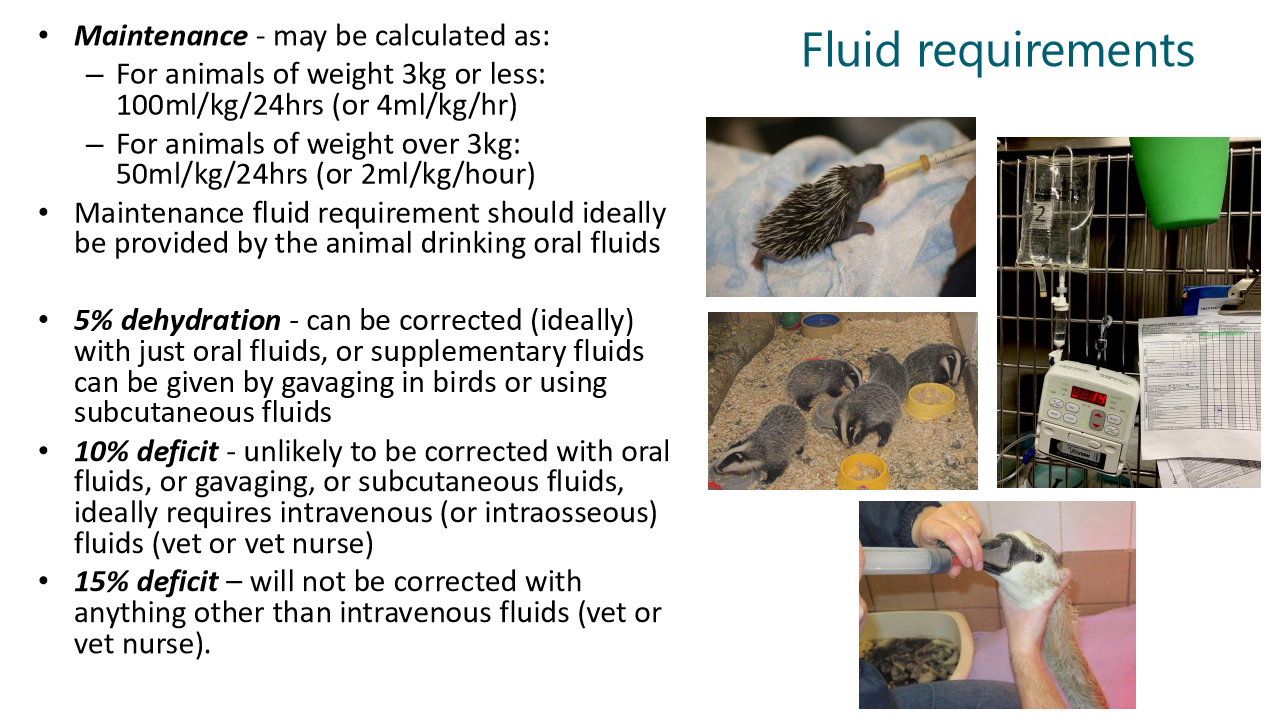
what are the fluid administration routes and volumes?
this is similar to dogs and cats
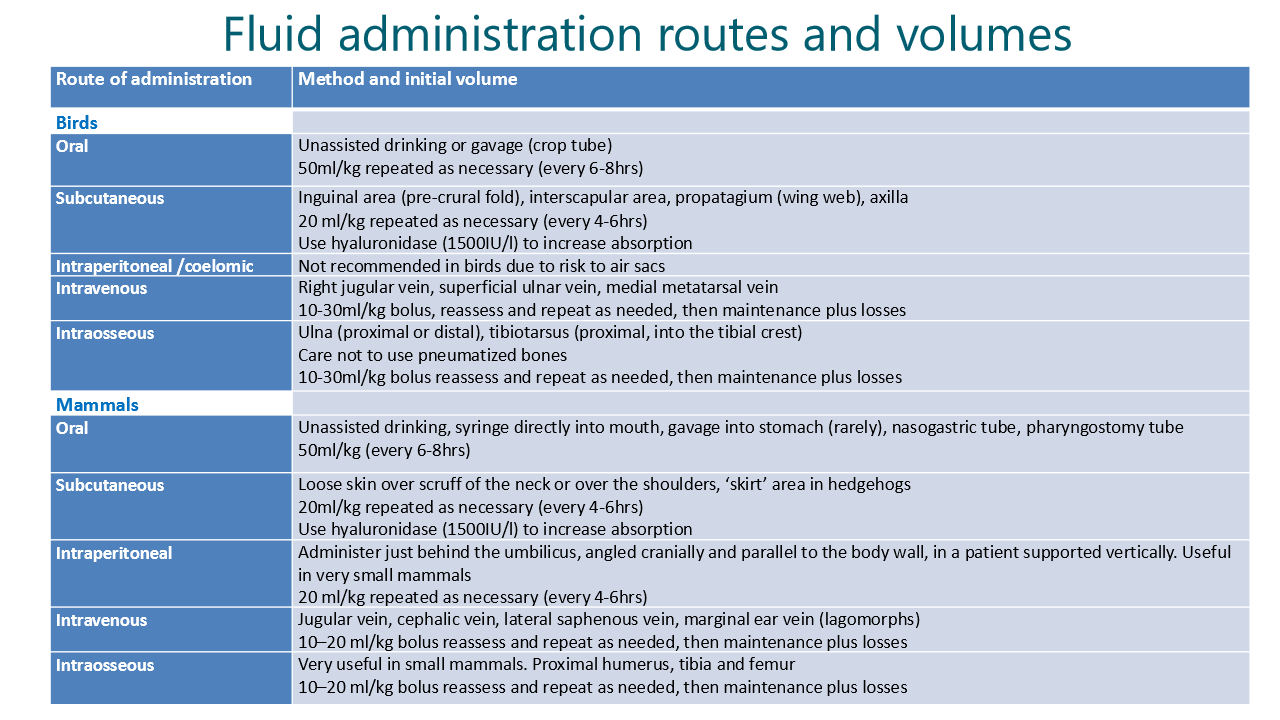
what are the fluid calculations per route of administration for mammals?
oral 50 ml/kg
subq 20 ml/kg
intraperitoneal 20 ml/kg
Vet/nurse only:
intraosseous 10-30 ml/kg
intravenous 10-30 ml/kg
what are the fluid calculations per route of administration for birds?
crop tubing (gavaging) up to 50 ml/kg
subq 20 ml/kg
intraperitoneal 20 ml/kg
Vet/nurse only:
intraosseous 10-30 ml/kg
intravenous 10-30 ml/kg
how would you decide which analgesics to use in a wildlife case?
NSAIDs
reasonable analgesia
can be supplied to wildlife centers
few safety restrictions
(meloxicam most commonly used)
Opioids
excellent analgesia
combine well with NSAIDs
cannot be supplied to wildlife centers
many restrictions
(methadone, buprenorphine, butorphanol)
Consider:
no sterioids
licensing
route and ease of administration
doses- from similar species
wound dressings (they are the same as other species), but how would you bandage a bird?
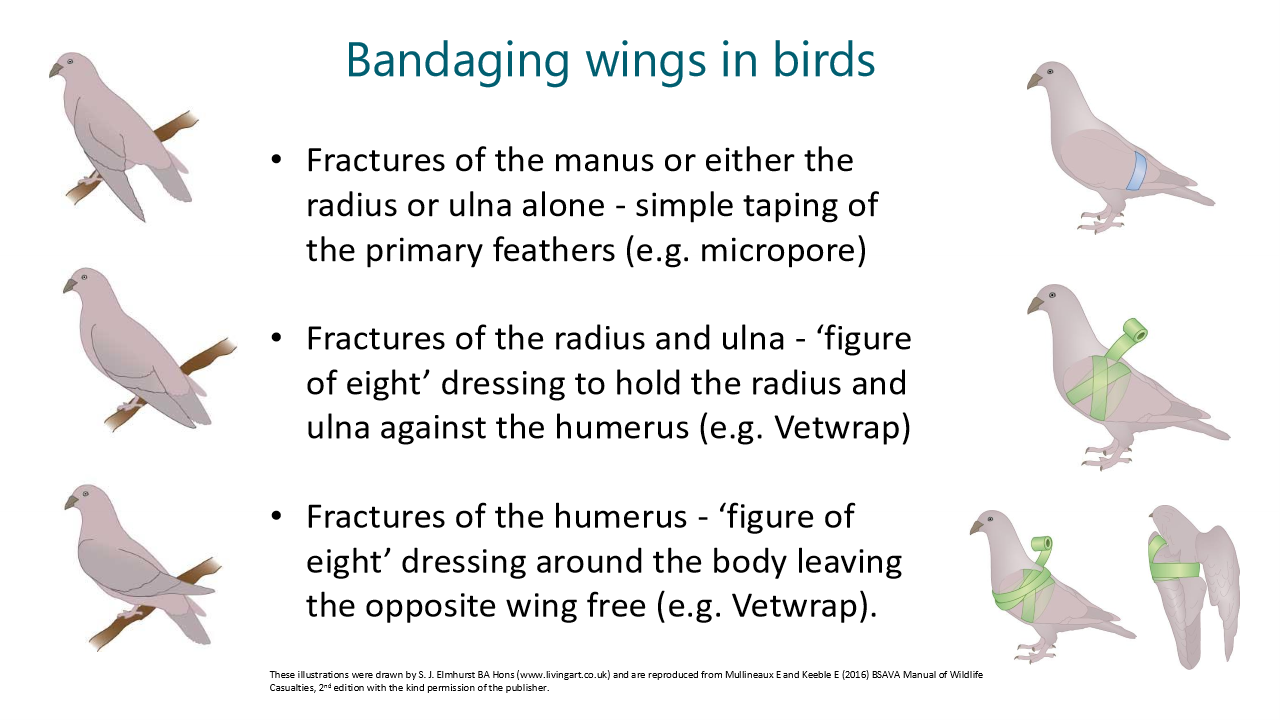
what should be present in short-term accommodation?
appropriate level of segregation or isolation
appropriate place in practice (privacy)
suitable kennels and bedding
cover front of kennel with blanket
birds may need perches, water (to sit in), or have padded bedding
what are considerations for environmental conditions for the animal?
temperature
different for adult or neonate
thermoneutral zone of birds
lighting
ventilation
humidity
how do you minimize human interaction in these cases?
avoid animal by:
using radio or tv
avoiding direct human contact like petting or talking to the animals
Keep biosecurity in mind!
she hardly read the slide and it really just said to keep them isolated so im not gonna harp on it
what are some food options for wildlife?
commercial liquid diets
reanimyl, critical care formula, hill’s a/d, lafeber, emeraid, etc. for most species
cat and dog food for carnivores, insectivores, or omnivores
day old chicks for birds of prey, badgers, or foxes
small fish (sprats) for seabirds and waders
variety of seeds for granivorous birds
bird pellets for gamebirds or waterfowls
what should you do with every wildlife case?
keep good records! it’ll keep you safe with any legal troubles!
honestly, the rest listed is really just common sense, saying how you should consider cost of any diagnostic tests and to be cautious with immediate use of antibiotics. this is no different from general practicing